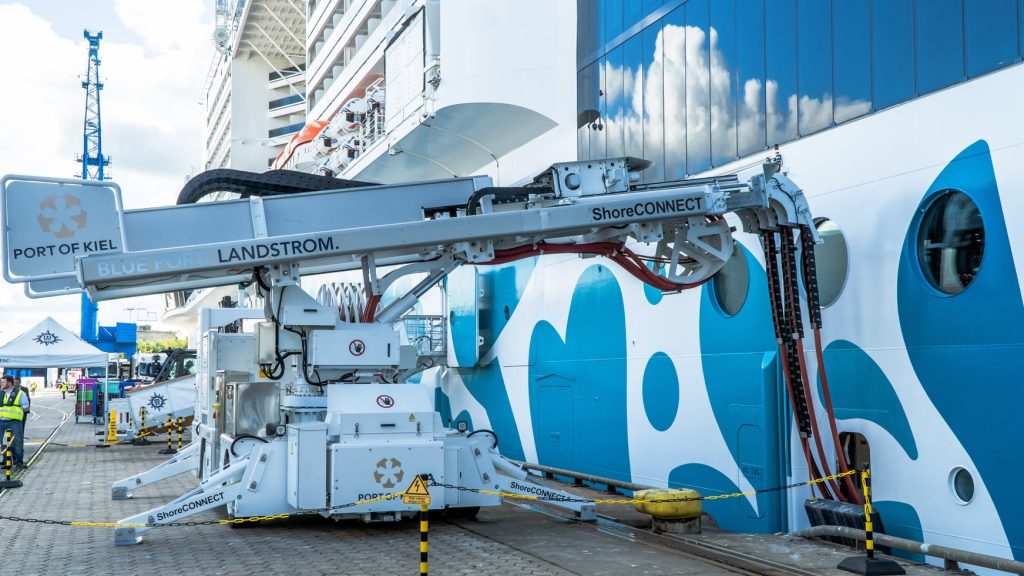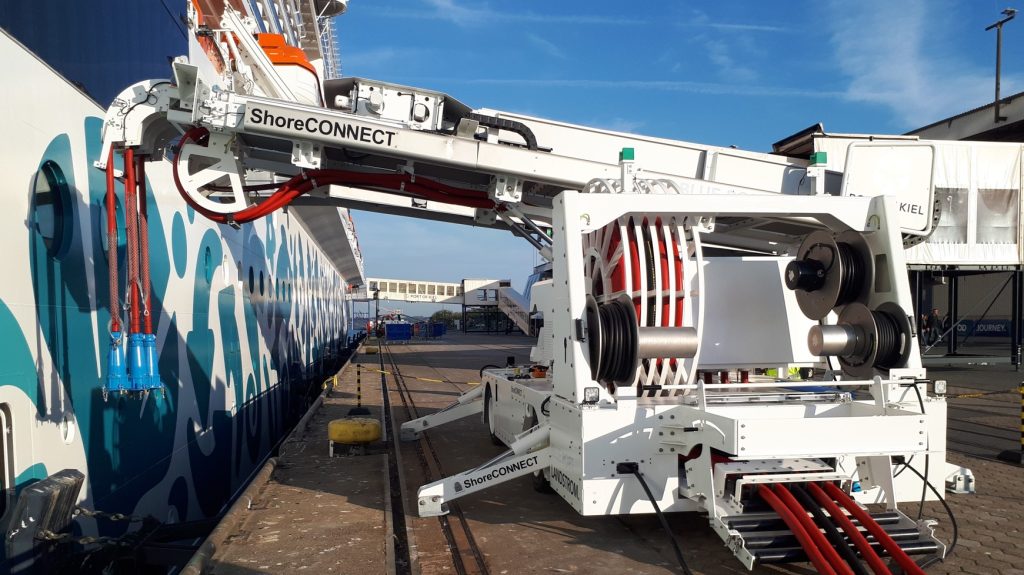The Port of Kiel has inaugurated two new shore power facilities at the Ostuferhafen. The facilities comprise a 50/60 Hz shore power facility for cruise ships and ferries as well as a 50 Hz shore power facility for ferries and were funded in equal parts by the Federal Government and the State of Schleswig-Holstein.

Since 2019, the Port of Kiel has been continuously investing in the expansion of its shore power infrastructure. The port now has one of the largest facilities in Europe. Kiel also wants to be a pioneer in sustainable maritime tourism and mobility in the future. The opening of two new shore power facilities at the Ostuferhafen is part of this endeavour.
Schleswig-Holstein’s Minister-President Daniel Günther handed over the grant of more than 11 million euros to Dirk Claus, Managing Director at Seehafen Kiel GmbH & Co. KG, during the opening ceremony in the presence of Kiel’s Mayor Ulf Kämpfer. The necessary commissioning of the plant for cruise ships has already begun. In parallel, integration tests with the cruise ship MSC Euribia continue in preparation for regular supply.

“The construction of the two new shore power plants at the seaport shows: Our ports are moving forward. With each planned, funded and built plant, the seaport of Kiel is implementing its Blue Port strategy and moving further towards climate neutrality. With the almost 5.5 million euros each, the state and federal government are also investing in sensible solutions that make maritime transport more environmentally friendly and in a location factor in competition with other ports,” said Minister-President Daniel Günther.
By 2030 at the latest, we want to supply all ships at our berths with green shore power.
Dirk Claus, Managing Director at Seehafen Kiel GmbH & Co. KG, expressed his thanks to all the players. “For us, the shore power systems are another important step on our way to saving Co2 emissions in the port of Kiel. By 2030 at the latest, we want to supply all ships at our berths with green shore power. For the coming season, we plan to supply 40 cruise calls alone via the newly opened facility at Ostuferhafen, with a further 60 calls at Ostseekai.”
Port of Kiel, a pioneer in shore power
The expansion of the shore power infrastructure is one of the priority projects of the Kiel seaport to reduce Co2 emissions as well as air/pollutant emissions of the ships during their berthing times. After the opening of the first shore power facility at Norwegenkai with a capacity of 4.5 MVA, 50 HZ, 10kV in 2019, the opening of a combined facility to supply cruise ships at Ostseekai (16 MVA, 50/60 Hz, 6.6/11kV) and ferries at Schwedenkai (5 MVA, 50/60 HZ, 6.6/11kV) followed in 2021. This makes the PORT OF KIEL one of the pioneers among ports on an international scale. According to the Cruise Lines International Association (CLIA), only two percent of the world’s ports currently offer shore-side power supply for cruise ships. In the current year 2023, around half of the calls of ferry and cruise ships have already been supplied with shore-side power via the existing shore power facilities in Kiel. The company uses Scandinavian green electricity for the shore power supply of the seagoing vessels.
The 17-million-euro construction project at Ostuferhafen includes two shore power facilities with capacities for the parallel supply of up to three seagoing vessels. The first of the two shore power plants is designed to supply one ferry and one cruise ship and connects four berths at Ostuferhafen to shore power. It has a capacity of 16 MVA and can supply cruise ships and ferries with a frequency of 50 or 60 Hz and a voltage of 6.6 kV or 11 kV. The second shore power system with a 50 Hz grid frequency is exclusively designed for RoRo ships and supplies two berths with a voltage of 6.6 kV or 11 kV up to a maximum power of 5 MVA. The construction project was realised with financial support from the federal government and from state funds.
